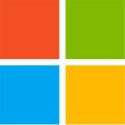
ASML Reports €7.5 Billion Total Net Sales and €2.1 Billion Net Income in Q3 2024
Today, ASML Holding NV (ASML) has published its 2024 third-quarter results.
"Our third-quarter total net sales came in at €7.5 billion, above our guidance, driven by more DUV and Installed Base Management sales. The gross margin came in at 50.8%, within guidance. While there continue to be strong developments and upside potential in AI, other market segments are taking longer to recover. It now appears the recovery is more gradual than previously expected. This is expected to continue in 2025, which is leading to customer cautiousness. Regarding Logic, the competitive foundry dynamics have resulted in a slower ramp of new nodes at certain customers, leading to several fab push outs and resulting changes in litho demand timing, in particular EUV. In Memory, we see limited capacity additions, with the focus still on technology transitions supporting the HBM and DDR5 AI-related demand."
- Q3 total net sales of €7.5 billion, gross margin of 50.8%, net income of €2.1 billion
- Quarterly net bookings in Q3 of €2.6 billion of which €1.4 billion is EUV
- ASML expects Q4 2024 total net sales between €8.8 billion and €9.2 billion, and a gross margin between 49% and 50%
- ASML expects 2024 total net sales of around €28 billion
- ASML expects 2025 total net sales to be between €30 billion and €35 billion, with a gross margin between 51% and 53%
"Our third-quarter total net sales came in at €7.5 billion, above our guidance, driven by more DUV and Installed Base Management sales. The gross margin came in at 50.8%, within guidance. While there continue to be strong developments and upside potential in AI, other market segments are taking longer to recover. It now appears the recovery is more gradual than previously expected. This is expected to continue in 2025, which is leading to customer cautiousness. Regarding Logic, the competitive foundry dynamics have resulted in a slower ramp of new nodes at certain customers, leading to several fab push outs and resulting changes in litho demand timing, in particular EUV. In Memory, we see limited capacity additions, with the focus still on technology transitions supporting the HBM and DDR5 AI-related demand."
























































